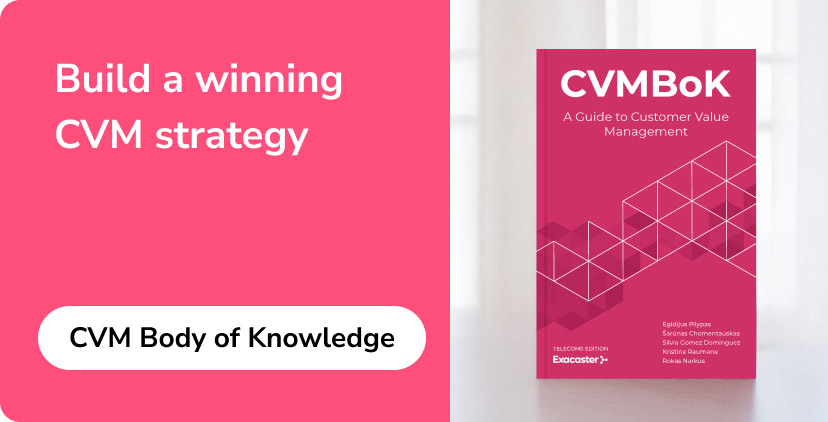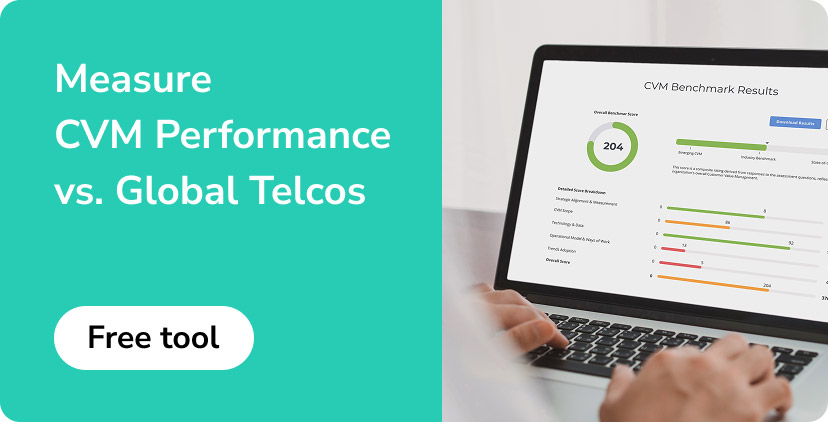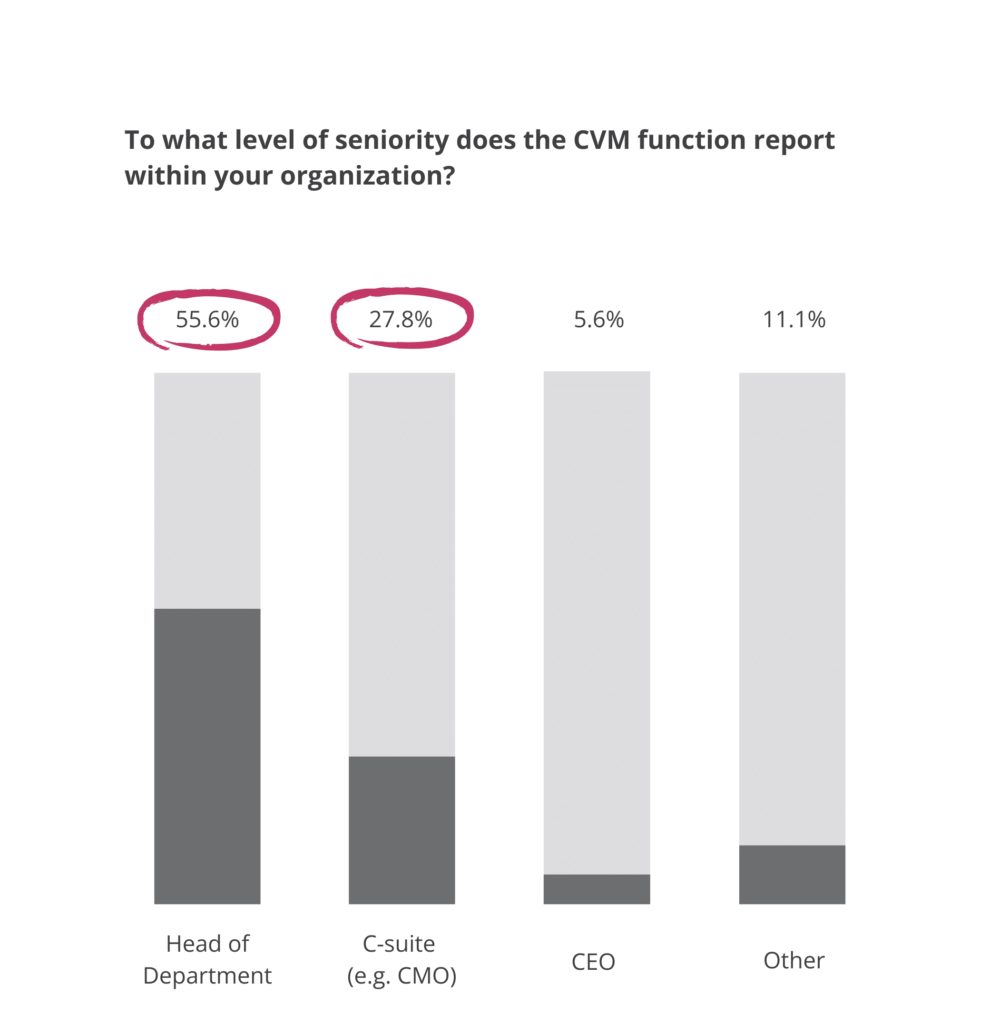CVM’s transformative impact stems from its cross-functional nature. It touches every department—from Marketing and Sales to Product Development and IT, all the way to Customer Service and Finance. However, for CVM to orchestrate such widespread organizational changes, it must be positioned strategically within the organization’s hierarchy.
Based on the CVM Trends 2025 report, 90 percent of CVM teams are within the Marketing or Commercial departments where eventually they report to one of the following:
- Chief Commercial Officer (CCO): When housed under the CCO, the CVM team intersects with marketing, sales, product development, and customer service. This setup enables the CVM team to infuse customer value insights across diverse commercial activities, ensuring that customer value is at the heart of all commercial decisions.
- Chief Marketing Officer (CMO): When viewed as a marketing function, the CVM team reports to the CMO, aligning with marketing communication strategies and initiatives.
- Chief Customer Officer (CCO): In some organizations, marketing and customer functions are merged under a CCO, who integrates marketing, sales, and customer-service.
- CEO or Board of Directors: In organizations prioritizing customer- centricity, CVM may report directly to the CEO or have board-level representation, underscoring its critical role in shaping the organization’s strategic direction.
To drive transformations effectively, the CVM team must receive robust support from C-level executives and hold a clear mandate to influence changes across all functions. However, based on the same CVM Trends report you can see that half of CVM teams report to the heads of departments instead of reporting directly to the C-suite. This means that most CVM teams are still treated as mainly operational roles without a major strategic impact on the organization’s growth (see Figure 2.2).
Silvia Gomez Dominguez, Senior Director, Customer Solutions, underscores the importance of this high-level positioning:

In my experience, CVM roles have always reported into the C-Level. It is crucial that CVM is seated at the right level because it requires influencing almost every single department in the business. They can report either to a CMO or a Chief Commercial Officer, reflecting the marketing-commercial mix that is most common.
Without strong C-level sponsorship, CVM teams may struggle to enactthe changes necessary for true customer-centric transformation. Marek Wiktor Grabowski, B2C Customer Value Management Directorat Orange Poland, highlights this challenge:

There is a need for C-Level sponsorship, sometimes even CEO sponsorship. Different stakeholders in the organization hold significant power, so it is important to have a good sponsor. A marketing director heavily involved with data and adept at articulating CVM’s impact can help, but C-level support is indispensable.
CVM often introduces initiatives that challenge established practices, which can meet resistance without executive backing. For example, implementing an AI-driven NBA framework might require significant investment and cross-departmental cooperation. Such a strategic move demands endorsement from top leadership to allocate resources and prioritize the project.
Furthermore, educating C-level executives about the strategic value of CVM is essential. Tommy Wahyudi, VP – Head of CVM Data Growth Strategy at Indosat Ooredoo, shares his insights:

Not so many C-level executives understand how CVM works. They see CVM as just upselling or maybe selling cheap, giving discounts to the customer. That’s what a lot of CVM practitioners get addressed with— you’re just selling cheap products to your customer, and that’s why you are growing. Well that is not the case. We trade off the yield with the subscriber to make them spend more. Eventually, after experiments that prove revenue increases, the C-level gets educated. It’s a long journey because it takes time for people to understand how CVM works.
Previous: The Transformation from a Product-centric to a Customer-centric Approach
Next: Customer Value Management Key Performance Indicators (KPIs)






